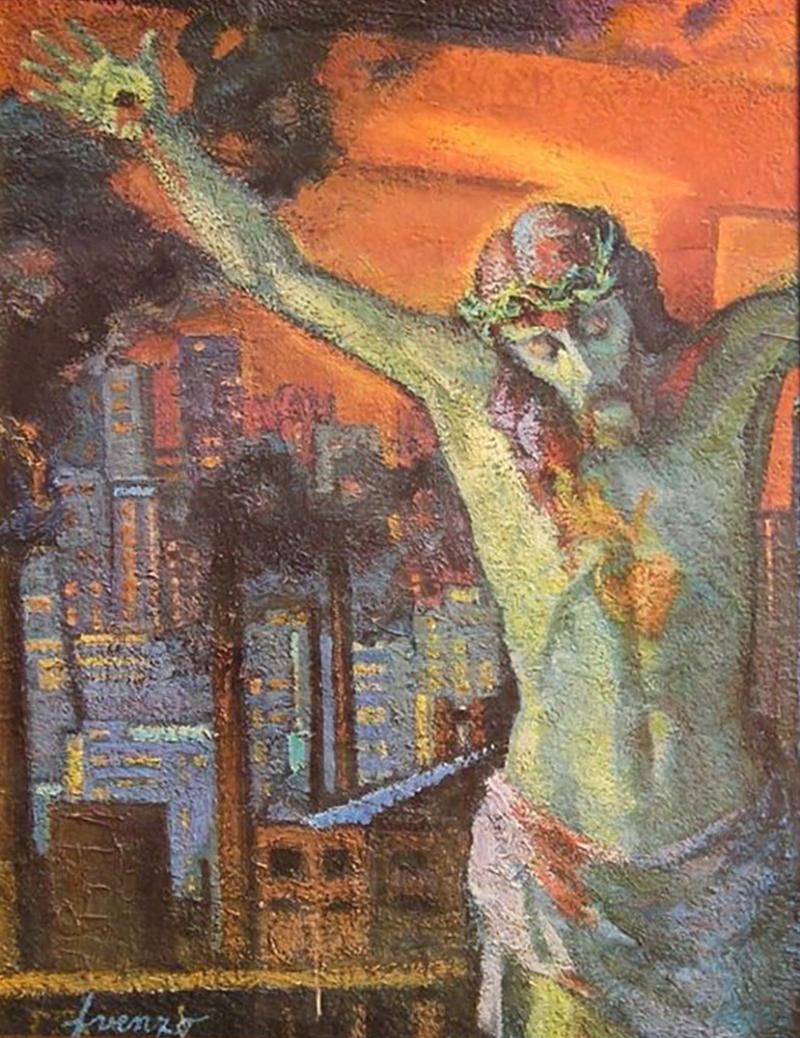
The image of Christ crucified amid a bleak urban landscape reminds us that wherever there is any human suffering, God is also suffering. The smoke stacks poisoning the environment, the tall towers that depersonalize a sense of neighborhood, and the lack of any human presence save that of Jesus Himself are underscored by the color palate of deep russet, black, and gray. One is reminded of William Blake’s “Jerusalem” – one interpretation of which suggests that the mills and factories of the Industrial Revolution dehumanized society and enslaved millions.
At closer examination, though, the heart of Jesus radiates an amber glow. It is not immediately recognizable as the black smoke and orange sky dominated the image, but it is there, nevertheless. One is reminded that even amid the suffering of people, the destruction of the environment, and the dehumanization in our communities, a heart beats that radiates uncompromised and unquestioned love.
The image of Christ crucified evokes the thinking of Duns Scotus: Jesus’ death was less a payment for sin and more a divine epiphany for all of us to see. “Jesus was not changing God’s mind about us; he was changing our minds about God.” Jesus is a gift to us. He is God choosing to be incarnate to make known His love and His heart in the world and in the hearts of us, His children. We must first recognize it amid the distractions of a world in torment and then say “Yes!” to accept God’s love and allow God to love us. In turn, we must be that same heart for others in this world.
Reflection by Gerry Grossman, Former Head of Woodlands Academy Image by Brother Mario Enzo, SJ



